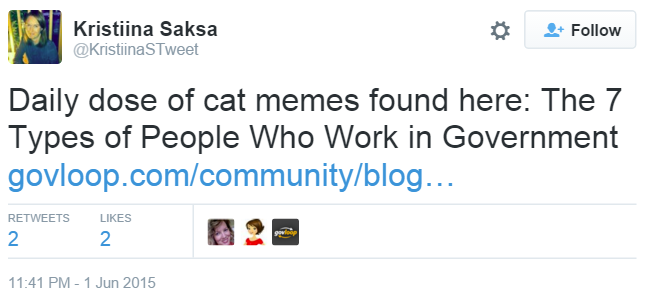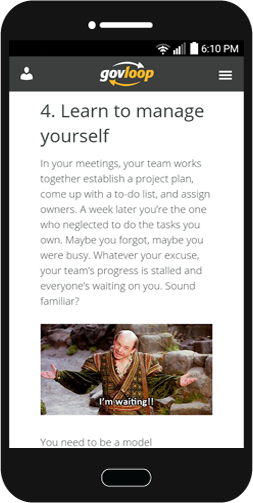Take a tour around the internet, and it’s clear that pumping out blog posts isn’t hard. We’re surrounded by vast virtual seas of terrible clickbait dreck. What’s difficult is putting out blog posts that contain content that matters.
You can help uplift online content by dedicating yourself to being a better blogger. It’s more than polishing your grammar or devising the listicle to end all listicles. Being a better blogger is about focusing on quality and a devotion to your reader.
Know why you blog
You might want to blog to share your knowledge with your peers to help them do their jobs better. Or to boost your career by sharing your expertise or by expanding your network. Or, you might blog to reach people in a way that motivates them to take specific actions that may improve their quality of life. You might blog simply for the love of writing.
Whatever your reason, keep it at the heart of your blogging. As you create online content, you’ll need to make all sorts of decisions. Staying true to why you blog will make the best choice clear.
Respect who you write for
Make this your mantra: The general public is not your audience.
You can’t blog for everyone—you’ll never please them all. Instead, write for a specific group of people. It could be an audience of twenty people or twenty million. No matter the size of your audience, you’ll write better content when you know who they are, what captures their attention, what they need, and how your blogging can help satisfy that need.
Use your writing to engage with a group of people whose time and attention you value and respect. You can be a successful blogger with a small, loyal group of readers, so long as they’re the right people. If you write high-quality content, your audience will grow in time.
Blog in the right place
Where you should blog depends on why you blog and your audience. You wouldn’t blog on GovLoop about do-it-yourself hamster taxidermy. Pick a site where readers will be interested in what you have to say.
If you’re looking for a sandbox in which to practice, set up a free blog at WordPress.com or Tumblr. Even if you don’t have any technical web skills, these sites make it easy to launch your blog and get writing. You can use a pseudonym or set your blog to private if you don’t want to be discovered.
If you’d rather not bear the burden of constantly creating content for your own blog, try writing for a site like Medium or LinkedIn Pulse, or here at GovLoop.
Keep an idea bank
An idea bank is a place where you can jot down topics and sources of inspiration as fodder for future blog posts. These ideas might strike at any time, prompted by your work, a conversation with a colleague, an incisive quote, or things you read or watch. Visit your idea bank when you need to think up a new blog post topic.
Make sure your idea bank is always handy (sorry, since it’s not accessible 24-7, a whiteboard in your office doesn’t work). If you’re a tactile person, try a pocket-sized Moleskine journal. The digitally inclined might prefer a cloud-based tool like (my favorite) WorkFlowy, Google Docs, Todoist, or Trello. If the sources of your ideas are visual, Pinterest is the way to go. To store idea sources in many formats, try Evernote.

Example of an idea bank in WorkFlowy.
One blog post = one topic
Books have chapters. Blog posts don’t. You’d be confused if I switched from blogging advice to tips for working from home in one post. Do yourself and your readers a favor, and limit yourself to one topic per blog post.
If your idea grows larger than one blog post can handle, break it into multiple posts (like I did for inspiring GIFs by government agencies and tools for making GIFs). If you find yourself on a tangent, plop that related but separate idea into your idea bank to explore another time.
Craft a compelling title—and follow through
Titles are such tiny pieces of content. Why do they matter so much?
A compelling blog post title gets people interested in reading everything else you have to say. It’s the first thing people see in social media shares, in search results, and in their inboxes. It needs to be short so it fits in those confined spaces, yet specific and exciting enough that people click.

What a blog title looks like in Google search results.

What a blog title looks like in Twitter, with a little personal commentary.
.
The title is the most important part of your blog post because it is your promise to your reader. When you fulfill that promise in the rest of your blog post, your content will shine and your reader will be happy.
Don’t worry about the “right” length
For a while, short blog posts was the best way to blog. These days, people are also willing to read long essays and other digital “longform” content. What matters more than any particular length is that your blog posts are high quality.
Your blog post should just be as long—or as short—as it needs to be. If what you’re writing is engaging, interesting, and useful, you can write longer blog posts. The best length for your blog post will depend on the complexity of your topic and also on your audience’s—and your editor’s— preferences.
Structure your writing for digital readers
Mobile dominates, so a lot of people will read your blog post on their smartphone, tablet, or other device. If you’re used to crafting reports, memos, and other materials destined for an 8-1/2 x 11 life, blogging will require a shift in writing style.
There’s nothing worse than a wall of text. Even on a computer monitor, a scannable structure helps readers navigate and retain your ideas.
Break up your content with headings that call attention to each section, or organize your ideas into lists. Incorporate visuals to add interest and reinforce ideas. Use short paragraphs made of short sentences and plain language. Either Hemingway Editor or Slick Write can help you write more clearly. You don’t have to use all of these elements all of the time, vary it up as you go.

What one of my GovLoop blog posts looks like on a smartphone.
.
Before you hit ‘Publish’, do your digital readers a solid and read your blog post on your smartphone. This will identify areas that could discourage people on mobile from reading through to the end.
Lauren Girardin is a marketing and communications consultant, writer, and trainer. Find her on Twitter at @girardinl.





Great tips. Hemingway and Slick Write look like excellent tools.
Thanks Kevin. Both those tools are easy to use and do what they do well. If you use them, please let me know how it goes.